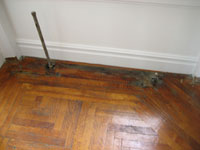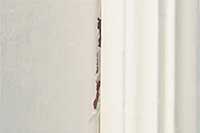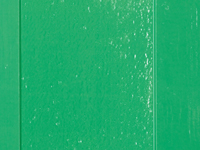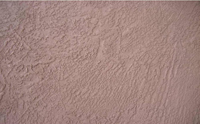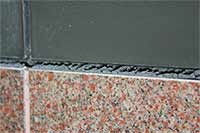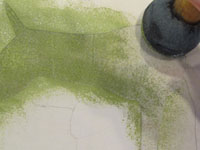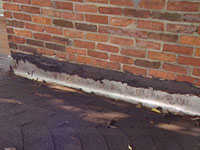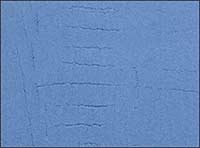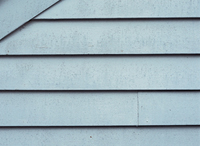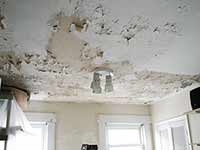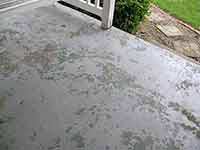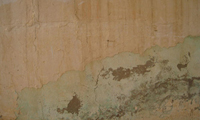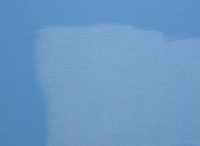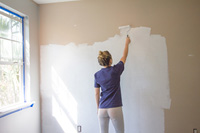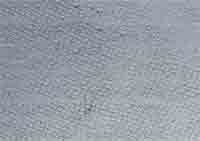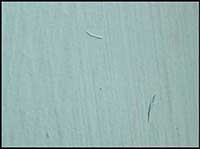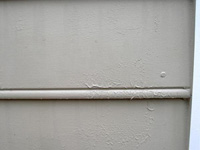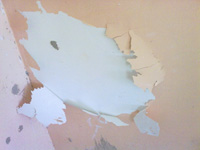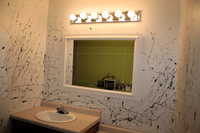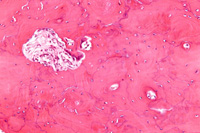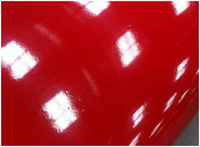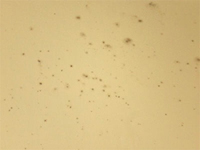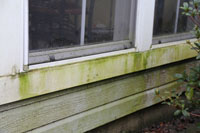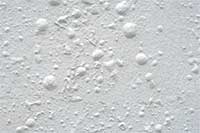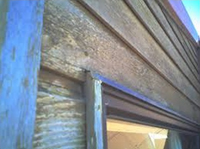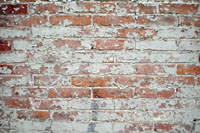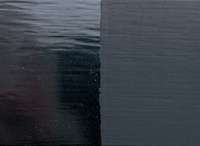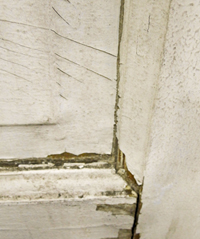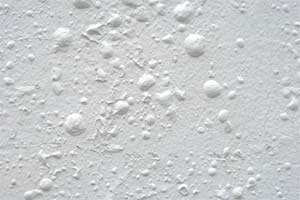 CAUSES: There are two main types of blisters—those caused by heat and those caused by moisture. Painting in direct sunlight on a surface that is too warm causes heat blistering. The film dries too rapidly, and trapped solvents later vaporize, bringing pressure against the topcoat creating blistering. This is more common when using a dark-color coating, since darker colors absorb the heat more readily than lighter ones.
CAUSES: There are two main types of blisters—those caused by heat and those caused by moisture. Painting in direct sunlight on a surface that is too warm causes heat blistering. The film dries too rapidly, and trapped solvents later vaporize, bringing pressure against the topcoat creating blistering. This is more common when using a dark-color coating, since darker colors absorb the heat more readily than lighter ones.
Blistering also can be caused by moisture, particularly in winter months. Interior moisture in tightly constructed homes is a major cause of exterior paint failures. Moisture building up inside the house escapes through the walls because there is no place else for it to go. In the summer, the sun heats the siding and the water trapped behind the paint film is vaporized. The resulting pressures cause blistering.
The use of alkyd or oil paint finishes in extremely humid environments with widely ranging temperature variations can cause blistering. Alkyd finishes are sealer-type finishes that will not allow moisture to vaporize and escape through the siding’s surface film. Summer sun will cause moisture escaping from the interior of the home to vaporize faster than the alkyd finish coats will allow moisture to escape through its surface. This then, eventually, causes blistering of wood surfaces. One other cause may be application of coatings over contaminated substrates. Failure to properly remove soluble chemical salts from the substrate prior to coating may result in blistering later.
SOLUTIONS: First, determine which type of blistering exists. Break open one of the bubbles. If bare wood shows, the blister was probably caused by moisture; if another layer of paint shows, a heat blister is the most likely cause. In either case, the blisters should be removed by scraping and sanding. In the latter case, the prime coat is generally not affected; and you can repaint, without priming, when the sun is not shining directlyon the surface.
If the blistering was caused by moisture, a number of solutions exist. Repair loose caulking and install vents or exhaust fans if necessary. If the home has lap siding, siding vents can be installed under the siding in areas where blistering has occurred. This will allow moisture from the inside of the house to evaporate before penetrating the wood siding, solving future blistering problems. Sand and scrape the peeling paint to bare wood; prime exposed areas and repaint. If large areas of the painted surface have blistered and need to be removed, high pressure washing or the use of a heat gun will speed the removal process.
If the entire house is reprimed but stands without the finish coat for an extended period of time, more blisters may develop. These should be scraped smooth and spot-primed before applying the finish coat. Since blistering is the beginning stage of peeling, see “Peeling From Wood Due to Moisture” for more detailed recommendations.

